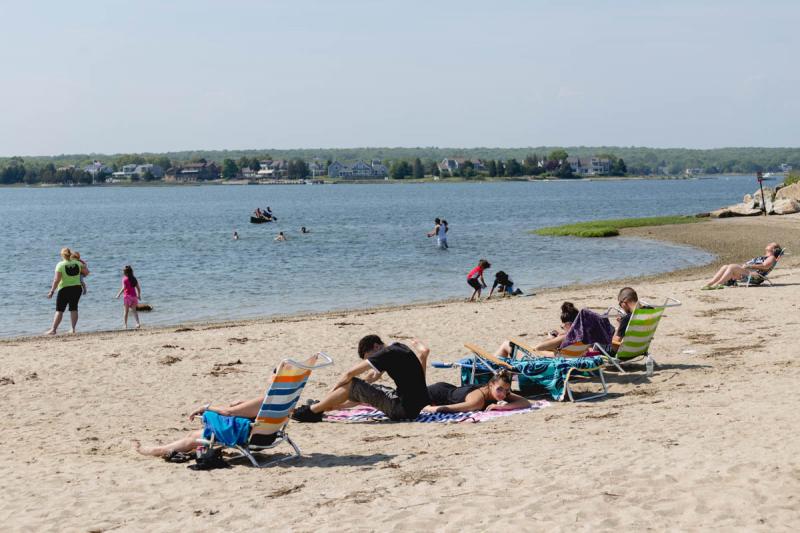Proposed incentive program to drain the pain of septic to sewer connections
Approximately 40 Dartmouth homes may find themselves connecting to sewer in the next two years, according to a newly proposed incentive plan from the Buzzards Bay Coalition.
Over 150 Dartmouth properties along the Apponagansett Bay watershed are on septic but overlay the existing sewer network and the proposed plan could help some of them get connected, according to Dan Goulart, Buttonwood to Bay project manager for the Buzzards Bay Coalition.
The Coalition is proposing a partnership with the town through a program called “Connect to Protect Apponagansett Bay,” that would incentivize sewer connections to reduce the approximately 3,200 pounds of nitrogen entering the watershed annually from these properties, according to Goulart.
Goulart joined the Board of Public Works for its meeting on Thursday, July 25, to present the program and request the town sewer connection fee be reduced for program participants from $2,500 to $600.
Though board members would like to see more information before making a decision, their discussion remained in favor of making this program work for Dartmouth residents.
“We want this to be a really positive process,” Goulart said — for both the residents and the town. And it is also completely voluntary.
The program will be paid for in part by the Environmental Protection Agency Pilot Watershed Initiative Grant, which is a five-year grant set to end in 2026 — contributing a total of $100,000, Goulart said. But the Coalition will be seeking an additional $100,000 through private sectors and other grant sources.
The program is a “spinoff” of the work being completed for the EPA watershed initiative, which involves conducting a watershed assessment, improving water quality and implementing a number of solutions within its five-year timeframe, Goulart said.
The Coalition tested the waters in Buttonwood Brook, Apponagansett Bay and Dike Creek to narrow down pollutants and while other ongoing environmental projects will help, this is a “quick way to reduce nitrogen loading to the Bay,” he said.
The consequences of not reducing the nitrogen in the Bay, includes increased beach and shellfishing closures as well as risk of algae blooms, according to Goulart.
Through the initiative, the Coalition was able to update the GIS map for Dartmouth’s sewer network and using records from the Board of Health, 153 septic-user properties on the watershed were identified, he said.
Connecting to sewer can be expensive, Goulart said. Property owners face barriers financially, structurally, but also in terms of capacity, with older retirees not having the ability to plan and execute such a project. The Coalition wants to not only provide financial support, but also technical and contracting assistance.
With two years remaining in the grant program and limited funs, the scope of homes needed to be reduced. Sixty of the initial 150 homes were selected as potential participants on the basis of the following criteria: pre-Title V construction, owner occupied, within 50 feet of an existing line, under 2,000 square feet and with an estimated property value of $250,000, Goulart said.
“We want to make sure this first iteration is targeting the people who need the incentive,” he said.
Goulart said the goal is to connect at least 20 properties a year, beginning in October if all the details are approved. After the initial two years, the town can expect an additional 9,000 gallons of wastewater per day.
If the program is extended and all 150 properties are connected, that will be a total of approximately 24,000 additional gallons per day, he added.
Goulart highlighted additional benefits for homeowners, including the fact that many of the septic systems are approaching the end of their lifecycle, are located in areas with high ground water and making this change will increase the value of their property.
He said although $1,900 off the connection fee seems like a lot, “spending the money to incentivize someone to connect to sewer really does come out as a really cost effective way to reduce nitrogen in Apponagansett Bay.”
He added with current sewer rates, these program participants will pay back the town within a four year period and then begin to make a profit, which is “revenue they maybe would have never seen had the program not incentivized the connection in the first place.”













